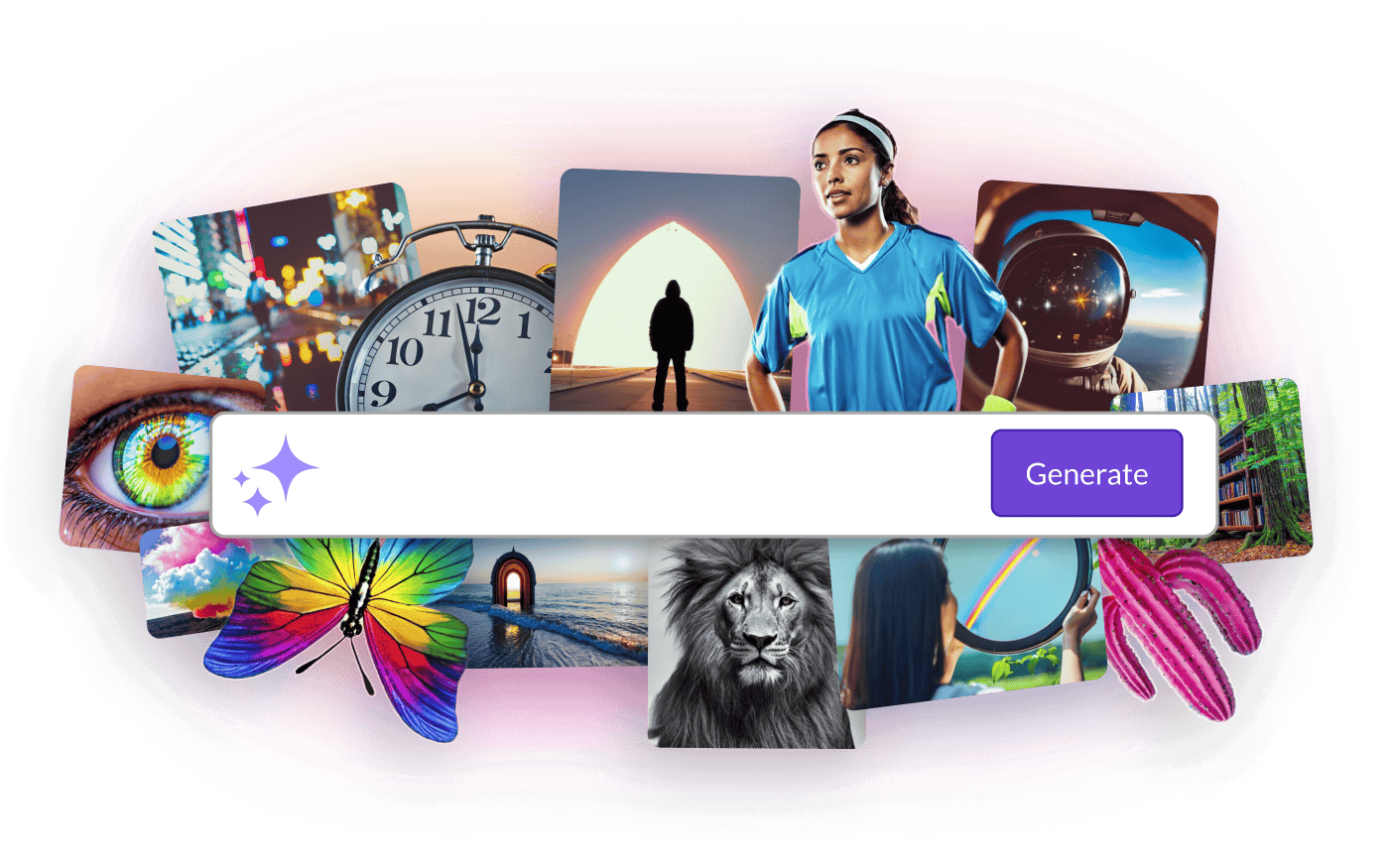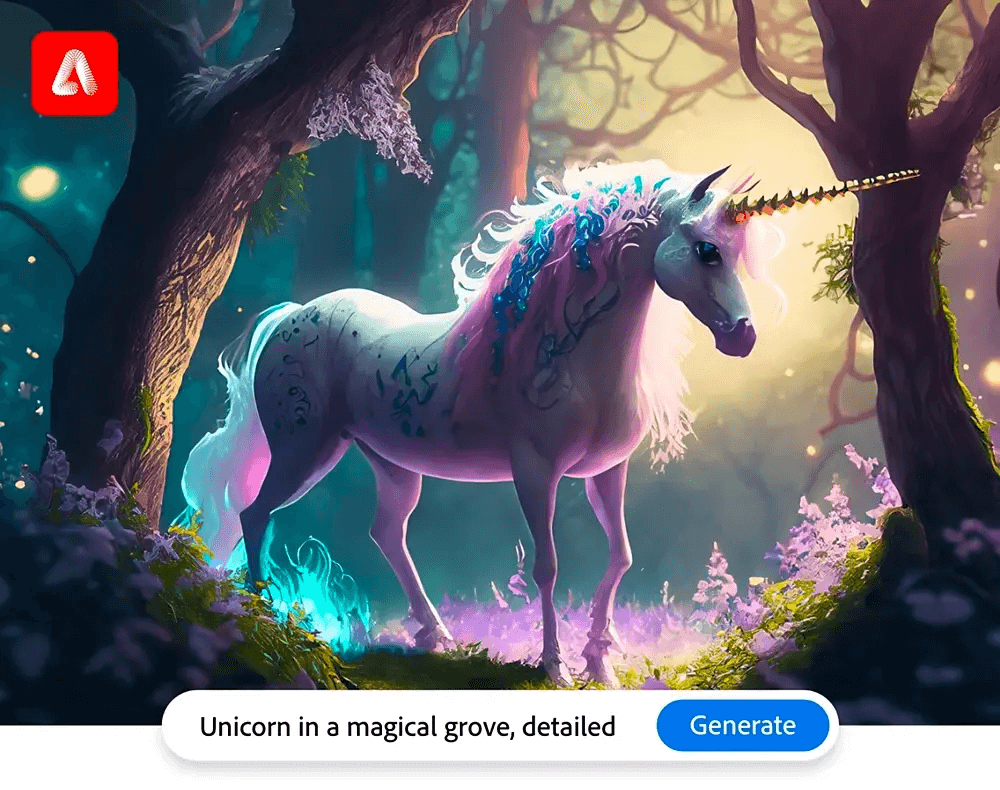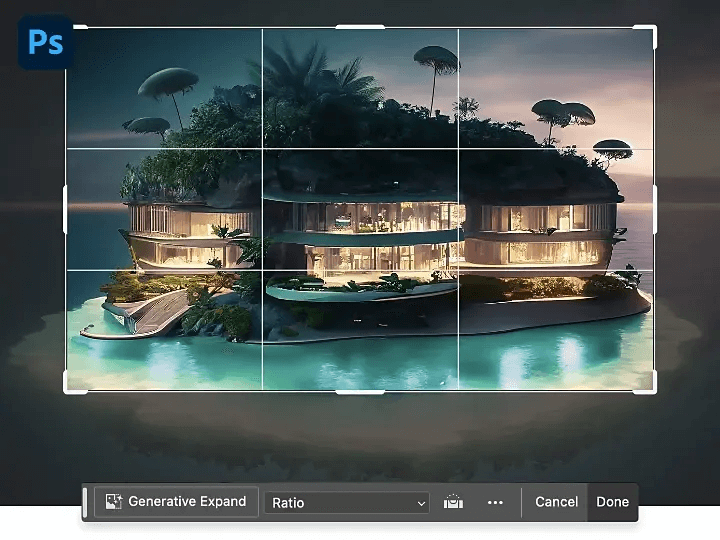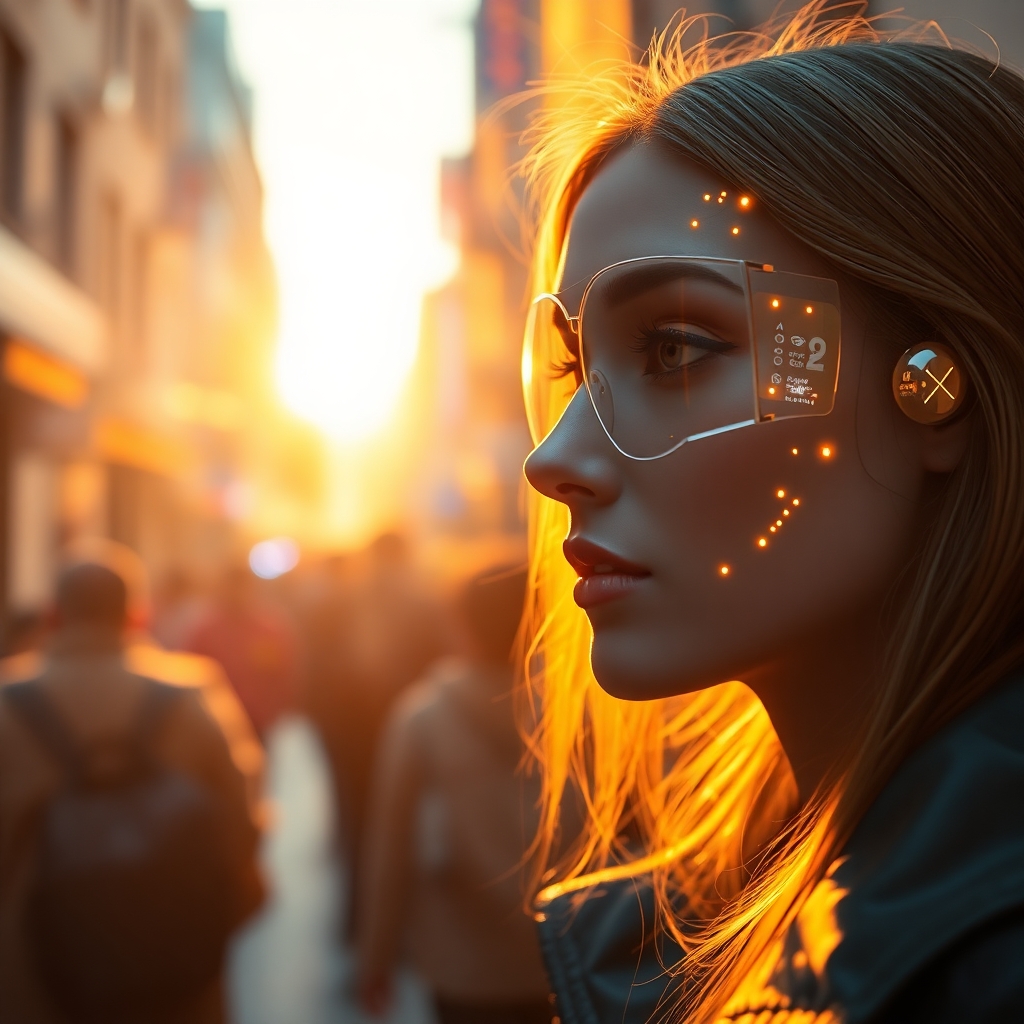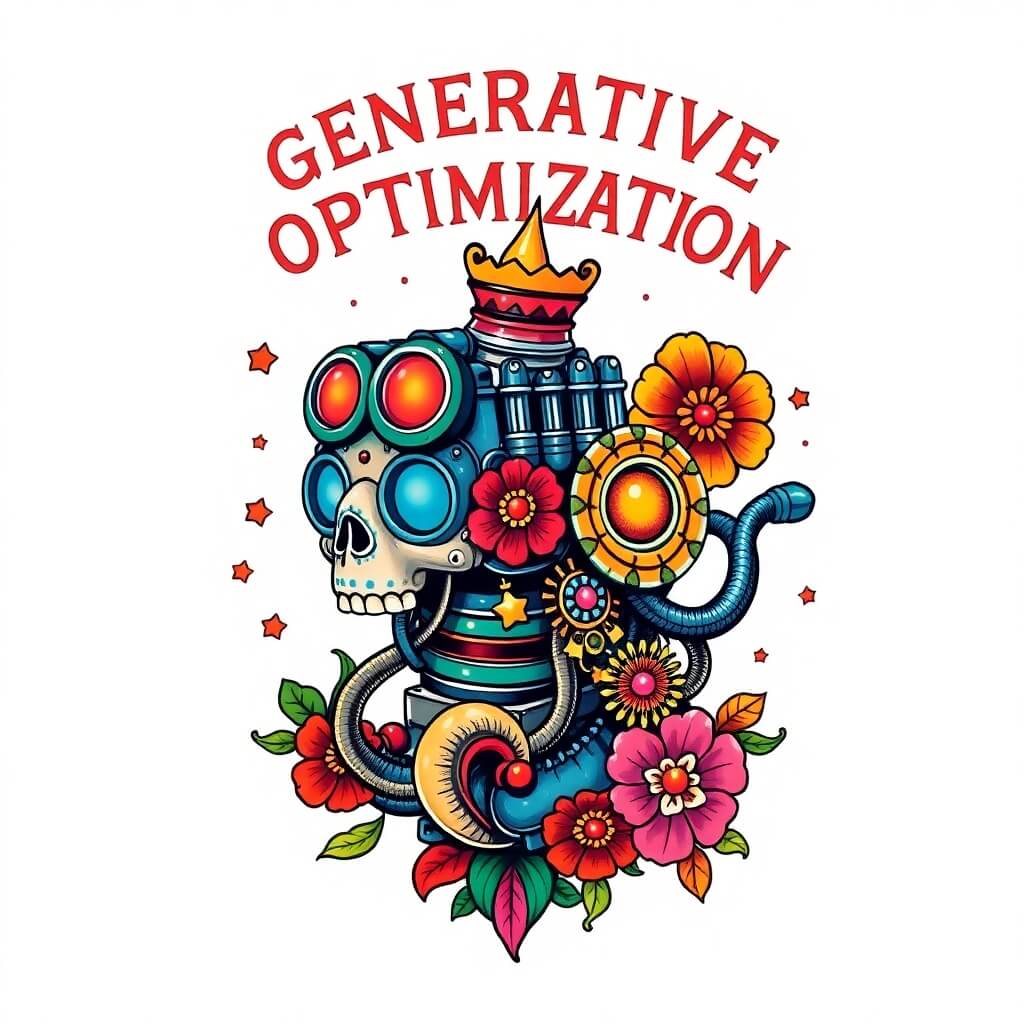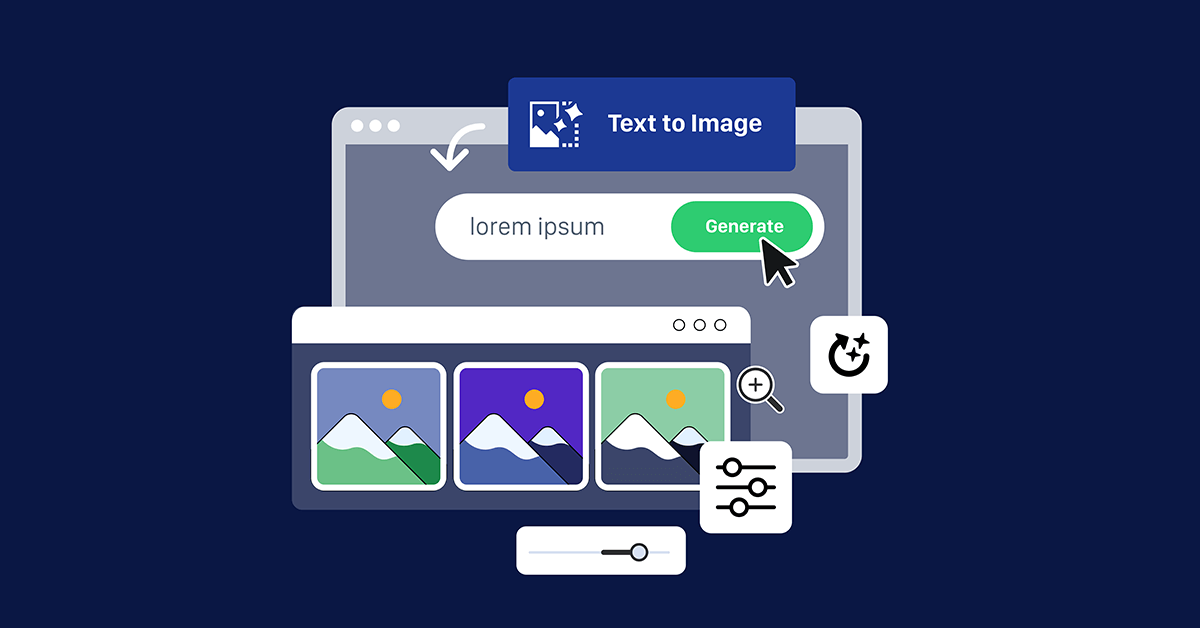
The rise of generative AI has enhanced how we create and interact with visual content. From speeding up workflows to creating practical design elements, AI has opened up new possibilities for creators and businesses. However, this technological leap forward has not been without its challenges and drawbacks, particularly regarding copyright concerns and ethical considerations.
As the debate rages on about the legality and morality of AI-generated images, two companies have emerged as potential leaders in responsible AI image generation: Getty Images (along with their more cost-friendly platform, iStock) and Adobe Firefly.
Below explores why these platforms are better suited for usage in a way that respects copyrighted materials, allowing companies to feel more secure that their creative and marketing are brand-safe and ownable.
The Copyright Conundrum
The world of AI-generated art and imagery has been fraught with controversy. High-profile cases involving platforms like Stable Diffusion and Midjourney have highlighted the complex legal and ethical issues surrounding AI-created images. These tools, trained on vast datasets of existing artwork and photographs from digital artists, essentially scrapping the web, have raised questions about copyright infringement and the rights of original creators.
The potential legal implications are significant. Artists and photographers have expressed concern that their work is being used without permission to train AI models, effectively allowing these systems to replicate their style and content without compensation. This has led to lawsuits and public outcry, creating an uncertain environment for AI developers and content creators.
These legal cases have also caused concerns for brands and businesses looking to leverage AI for their marketing needs.
Getty Images: A Commercially Safe Stock Image Site
Getty Images, a leader in the premium stock image industry, has proactively addressed these concerns. By partnering with NVIDIA Picasso, Getty has developed a commercially safe generative AI tool that draws exclusively from its own vast, proprietary creative library.
(Source: Getty Images)
This strategic move offers several critical advantages to brands and creators:
-
- Legal Safety: Getty significantly reduces the risk of copyright infringement by using only images it owns.
- Commercial Viability: The focus on commercially licensable content ensures that generated images can be used safely in professional contexts.
- Quality Control: Getty’s curated collection helps maintain a high standard of image quality and relevance.
- Fair Compensation: This model potentially allows for a more equitable system of compensating the original creators whose work contributes to the AI’s capabilities.
All images generated and modified by Getty AI are backed by their uncapped legal indemnification. Getty AI has an Enterprise pricing model and two package prices: $49 for 25 generations and $149 for 100 generations.
iStock AI: The Differences Between the Parent Brand and Child
iStock by Getty Images has long been the budget-friendly version of Getty since it was acquired back in 2006. Like Getty, iStock’s AI platform uses its own stock to train its model, with an easier-to-digest package price of $14.99 per 100 generations. Companies and creators also have the option to modify iStock’s existing imagery, including image extension and element removal, without the need for an additional photo editing platform.
Adobe Firefly: Transparency and Integration into Existing Processes
Adobe, known as the standard bearer in creative software, has taken a different but equally responsible approach with its Firefly AI image generator.
(Source: Adobe Firefly)
Key aspects of Firefly’s strategy include:
-
- Curated Training Data: Firefly is trained primarily on Adobe Stock images, openly licensed content, and public domain works, ensuring a clear provenance for its source material.
- Creative Cloud Integration: By seamlessly integrating with Adobe’s suite of creative tools, Firefly enhances existing workflows rather than disrupting them.
- Transparency: Adobe has committed to being open about which images are AI-generated, addressing concerns about transparency in AI art.
- Brand Safety: The focus on commercial-use images makes Firefly a safer choice for businesses and marketers.
Adobe Firefly can be used as a browser application or within an Adobe Creative Suite product like Photoshop.
Brands and agencies with an Adobe Creative Account have automatic access to Firefly. The advantage of using Firefly in Photoshop or another product is that AI can be leveraged within a design, like expanding the background of an image used in a banner set in Photoshop. Adobe Firefly also includes Content Credentials (a form of digital provenance) with its AI-generated images.
Unlike Getty, Firefly’s browser version offers a free version with 25 credits generated per month. Companies can also purchase generative credits. However, this purchase does not include usage of Adobe platforms.
Getty vs Adobe Firefly: Which is Better?
Pricewise, Adobe Firefly has an advantage over Getty and iStock. It also integrates more with the design process with its seamless integration into Adobe Cloud.
While Getty and iStock can only generate and modify imagery (including adding new elements, replacing them, or removing backgrounds), Adobe Firefly has additional creative use cases within Adobe Creative Cloud, such as:
-
- Text to Templates (Beta): Create templates using text prompts in conjunction with Adobe Express.
- Generative Shape Fill: Fill shapes with detail and color in your own style in Illustrator.
- Text Effects: Use prompts to apply textures or styles to text within Adobe Express or the Firefly browser application.
- Generate a Vector and Generative Recolor: Create a scalable SVG from a text prompt or generate a color variation of existing vector artwork.
- Generative Video (upcoming): Initial details include the future ability to streamline editorial tasks along with generating b-roll from text prompts.
Getty vs Adobe Firefly: Comparative Advantages Over Other Platforms
-
- Both Getty Images and Adobe Firefly offer significant advantages over many existing AI image-generation tools:
- Reduced Legal Risk: These platforms minimize the chance of unintentional copyright infringement by using properly licensed or owned content for training.
- Transparency: Both companies are open about their data sources and AI-generated content, building trust with users and the creative community.
- Commercial Focus: The emphasis on creating images suitable for professional use sets these tools apart in a market often focused on artistic experimentation.
- Workflow Integration: Both platforms integrate well with existing creative processes, making them more accessible to professionals.
Consumers’ Reactions to AI-Generated Imagery
Getty’s research shows that 42% of SMBs and SMEs already use AI-generated content in their digital marketing efforts. Consumers, on the other hand, are feeling less favorably toward brands that use AI-generated visuals of humans or products, with 90% of those surveyed reporting they want full transparency on AI. Brands like Dove have even pledged never to use AI to create or distort women’s images.
Major advertisers are listening to these concerns as they expand their AI-generative offerings. Google has outlined its principles for AI to address challenges and concerns. Meta knows that advertisers want more control over its AI abilities, so it has been transparent with its offerings and usage.
While consumers may not ever want fully generated AI imagery in certain ads, AI can still be used in more practical ways by brands, such as background extensions and image modifications.
(Source: Adobe Firefly)
Challenges and Future Outlook
While Getty and Firefly offer promising solutions, challenges remain. Using more limited datasets could potentially constrain creative output compared to open-source systems trained on broader datasets.
Although these more carefully curated systems may have higher costs, potentially limiting access for smaller businesses or individual creators, they are still the best solutions for assuring brand safety.
Looking ahead, we can expect to see:
-
- The development of industry-wide standards for AI-generated images
- Evolution of copyright law to address the unique challenges posed by AI
- Increased collaboration between AI companies and content creators
Conclusion
As AI-generated imagery continues to evolve, Getty Images and Adobe Firefly stand out as examples of responsible development.
By prioritizing copyright compliance, transparency, and integration with existing creative workflows, these platforms pave the way for a more sustainable and ethical future in AI-driven visual content creation. It’s also important to prioritize trust and authenticity, and how brands use AI moving forward will not make consumers feel “fooled or lied to” by their marketing.
As we navigate the future of AI, it will be crucial for developers, creators, and policymakers to work together to ensure that AI enhances, rather than undermines, the creative industries. A great place to begin is establishing how your brand uses AI in marketing efforts and outlining the usage rules in brand guidelines to align teams moving forward.
Unleash the Power of Creative Excellence
Elevate your brand with stunning, data-driven creative solutions. Partner with Overdrive Interactive to bring your vision to life and captivate your audience. Ready to stand out? Get started today!




